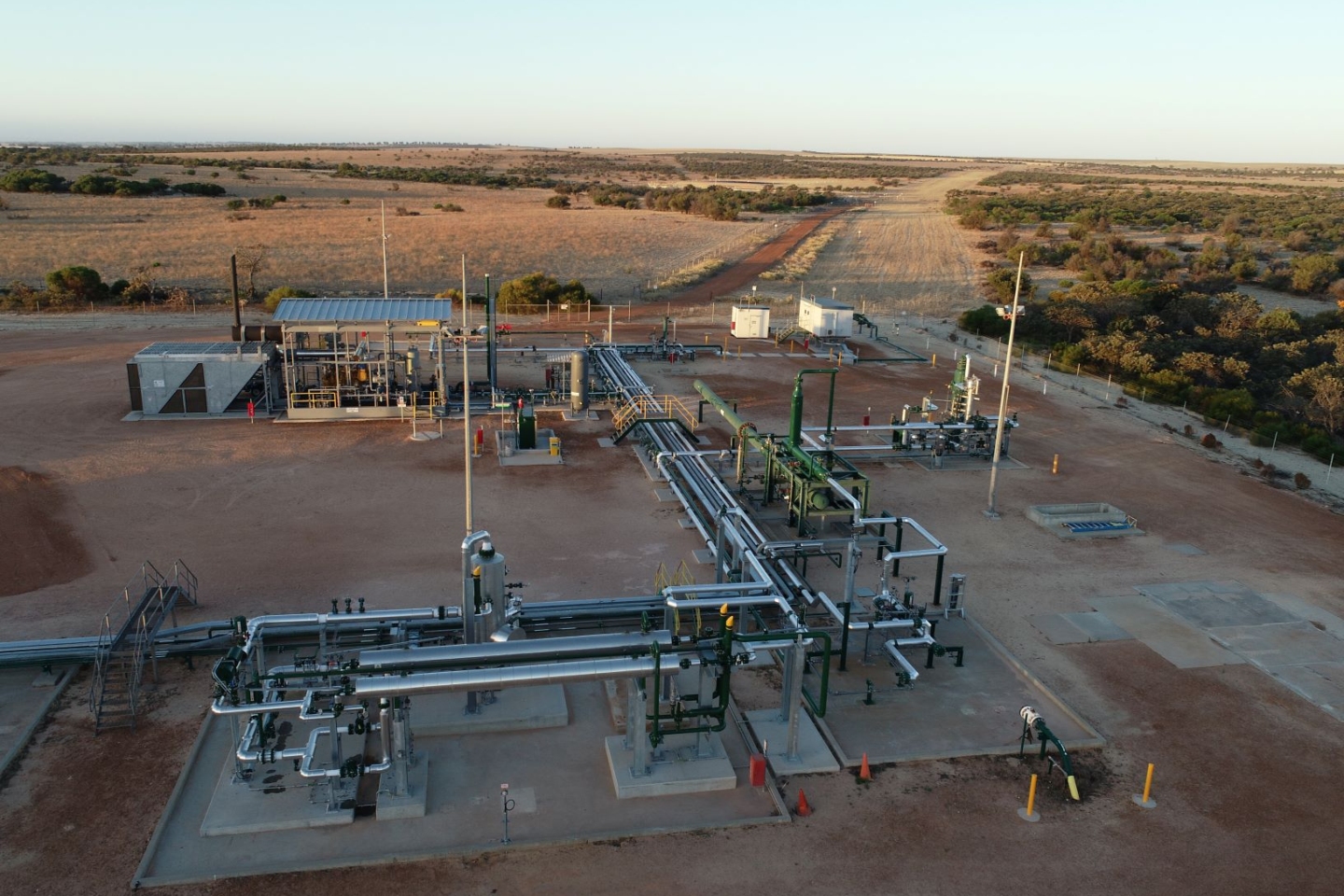Shares in Buru Energy soared as much as 36 per cent on the open to 4.9 cents after the company inked a game-changing deal with a private LNG processing and supply firm to fund and build an LNG plant at its Rafael-1 gas discovery in WA’s Canning Basin. The deal could see Buru transition from explorer to producer with saleable gas potentially flowing from Rafael by the second half of 2027.


Shares in Buru Energy soared as much as 36 per cent on the open to 4.9 cents today after the company inked a game-changing deal with the private, experienced integrated LNG company, Clean Energy Fuels Australia (CEFA), to fund and build an LNG plant at Buru’s Rafael-1 gas project in Western Australia’s mighty Canning Basin.
The strategic development agreement could see Buru transition from being an explorer to a producer with saleable gas potentially flowing from Rafael by the second half of 2027.
The tactical move marks a pivotal milestone in Buru’s dream to cash in on its Rafael gas and condensate project. The company says the discovery, 150 kilometres east of Broome and about 85 km south of Derby, is the only confirmed source of conventional onshore gas and liquids in the State’s Top End.
CEFA is backed by US$40 billion (A$64b) global infrastructure powerhouse I Squared Capital. It is part of the OCTA group of privately held companies with experience in gas extraction, field development, virtual pipelines, fixed infrastructure and power solutions.
The group provides both LNG transportation and remote hybrid power generation. CEFA owns and operates the 250-tonne-per-day Mid West LNG plant at Mt Magnet, and has key WA clients including Westgold Resources, Vault Minerals and Bellevue Gold.
Under the deal with Buru, CEFA will fully finance, build, own and operate a small-scale LNG plant at Buru’s Rafael 1 well pad that is capable of processing up to 300 tonnes of gas per day, along with associated condensates.
The agreement marks up the joint roles and responsibilities of Buru and CEFA before the duo starts nutting out the finer details of a binding agreement, which the companies expect to reach later this year.
The fully funded deal for the LNG plant will remove capital risk from Buru’s books, while CEFA will earn its money from long-term gas processing fees.
Under the plan, CEFA will begin trucking LNG directly to end users, allowing mining operations and remote communities to fast-track their energy transition plans within a couple of years.
This arrangement will leave Buru to focus on the upstream side of the project, covering everything from financing and construction to operations.
The company will also be responsible for progressing native title negotiations and securing WA government environmental approvals.
Buru Energy chief executive officer Thomas Nador said: “The agreement with CEFA is a watershed moment for Buru and the Rafael gas project. It marks a clear demonstration of the company’s gas strategy and transition from explorer to developer and long-term producer.”
CEFA’s Basil Lenzo said the development was a smart path to lower long-term regional energy costs and emissions.
By replacing costly, high-emission diesel with cleaner-burning, locally sourced gas, Rafael’s regional customers will be able to significantly cut their expenses and carbon footprints.
Rafael-1 was discovered in 2021 through a 50:50 joint venture with Origin Energy. The well struck gas across three pay zones.
An independent 2022 audit estimated the project holds a resource of up to one trillion cubic feet in gross 3C contingent gas and more than 20 million barrels of condensate, which is enough to meet WA’s retail gas needs for the next 30 years.
Despite their success, Origin exited upstream exploration in 2023, agreeing to a performance-based and staged $34M payout tied to key project milestones, including production licensing and investment decisions.
In early 2024, interpretation of the 3D seismic data led Buru to significantly upgrade Rafael’s gross recoverable 1C volumes to 85Bcf of gas and 1.8M barrels of condensate.
The timing of the resource boost aligned well with the WA government’s 2023 policy shift that allowed up to 85 per cent of Canning Basin’s onshore gas to be exported, with only 15 per cent required for domestic use. The policy change further enhanced the project’s commercial appeal.
Moving forward, Buru is gearing up for an extended flow test of Rafael-1 to pick up an independently qualified reserve ticket - a key precondition needed before a binding agreement can be signed with CEFA.
A second well, Rafael B, is set to be drilled in 2026 from the same site as Rafael-1. It will help confirm the size of the gas field, lock in steady gas production and provide for the planned Rafael LNG plant.
The company is exploring funding options to pay for the additional hole, including bringing on farm-in partners.
A final investment decision on the LNG development is expected later in the year or in early 2026. From there, Buru aims to start generating serious cashflows from the second half of 2027.
The company sees this development as a chance to power a growing market that lacks access to gas pipelines and struggles with high energy costs and unreliable supply. In simple terms, it’s an opportunity to deliver affordable, secure energy where it’s needed most.
Judging by the immediate market reaction, punters are likely to be watching closely as Buru pushes toward certification, permitting and - ultimately – production.
Is your ASX-listed company doing something interesting? Contact: matt.birney@businessnews.com.au













